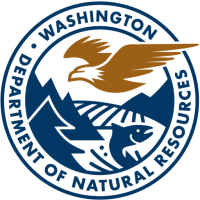I have a simple ask. Please add the words “urban and community forests” to HB 1181. They are critical to climate resilience in our urban areas.
Urban forests are also a budget and appropriations issue. Hilary Franz is requesting $8 million in the budget for urban and community forestry, The Federal Government is also adding millions to the states for urban and community forestry.
|
By Will Rubin, Forest Resilience Division Communications Manager with contribution from DNR Policy staff Many Tree Link readers may have recently heard that here at the Washington Department of Nat…
dnrtreelink.wordpress.com
|
In Nov 2022 at the Partners in Community Forestry Conference in Seattle, Commissioner of Public Lands Hilary Franz said, “Our urban forests are no longer a nice-to-have. They’re absolutely a must-have. Our urban forests are no longer a preferred line item on our budgets. They’re actually a testament to whether we are truly fulfilling our moral responsibility to an economically, environmentally, and socially just society.””
Here are my suggestions of where references to “urban and community Forests” could be inserted in HB 1181.
Page 6, line 13 – In the Land Use element add after open spaces and green spaces, “urban and community forests”,
In the same paragraph on the Land Use element , add sentence – “The land use element must evaluate urban and community forest canopy and its role in climate resilience, reducing heat island impacts, providing health benefits, and ecosystem services.”
P 17, line 37 Insert in last sentence. Identify, protect and enhance “urban and community forests “and natural areas to foster resiliency to climate impacts , as well as areas of vital habitat for “plant and animal diversity,” safe passage and species migration
page 6 Section 1. (10) Environment is more than air and water quality. It should include “healthy soil and plants and animals”
Thanks for considering this.
Our urban forests are a key component to keeping our cities livable as we increase housing. Trees are essential for climate resilience. With good planning we can have both trees and housing in our urban areas. It is not a question of one or the other. We can have both. This legislation needs to detail the necessity of cities and towns to incorporate their urban forests and trees as part of their climate resiliency plans as we also grow our housing supply.
Steve Zemke


